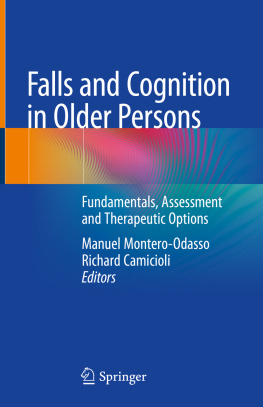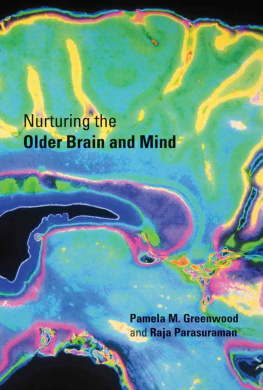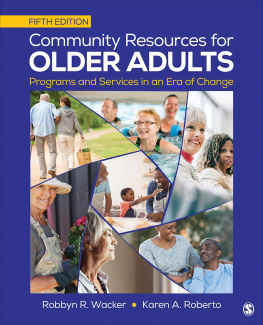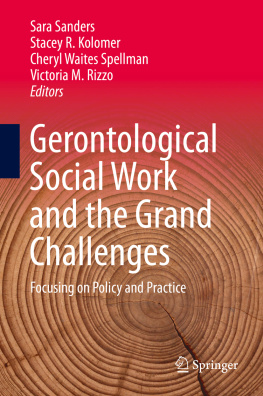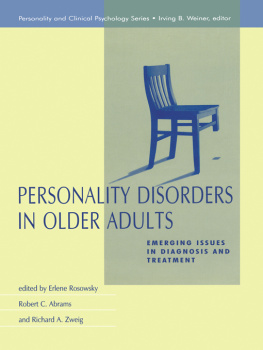Editors
Manuel Montero-Odasso and Richard Camicioli
Falls and Cognition in Older Persons
Fundamentals, Assessment and Therapeutic Options
Editors
Manuel Montero-Odasso
Division of Geriatric Medicine, University of Western Ontario, London, ON, Canada
Richard Camicioli
Division of Neurology, University of Alberta, Edmonton, AB, Canada
ISBN 978-3-030-24232-9 e-ISBN 978-3-030-24233-6
https://doi.org/10.1007/978-3-030-24233-6
Chapter 2 was created within the capacity of an US governmental employment. US copyright protection does
not apply.
Springer Nature Switzerland AG 2020
All rights are reserved by the Publisher, whether the whole or part of the material is concerned, specifically the rights of translation, reprinting, reuse of illustrations, recitation, broadcasting, reproduction on microfilms or in any other physical way, and transmission or information storage and retrieval, electronic adaptation, computer software, or by similar or dissimilar methodology now known or hereafter developed.
The use of general descriptive names, registered names, trademarks, service marks, etc. in this publication does not imply, even in the absence of a specific statement, that such names are exempt from the relevant protective laws and regulations and therefore free for general use.
The publisher, the authors, and the editors are safe to assume that the advice and information in this book are believed to be true and accurate at the date of publication. Neither the publisher nor the authors or the editors give a warranty, expressed or implied, with respect to the material contained herein or for any errors or omissions that may have been made. The publisher remains neutral with regard to jurisdictional claims in published maps and institutional affiliations.
This Springer imprint is published by the registered company Springer Nature Switzerland AG
The registered company address is: Gewerbestrasse 11, 6330 Cham, Switzerland
To my wife Denise, and our children Violet and Max, who have the virtue of making the bad moments vanish, and the good moments shine.
Manuel Montero-Odasso
Dedicated to my wife Wendy and our children, Amy and Emma, who provide meaning to life and work and support my reading, writing, and exercise habits.
Richard Camicioli
Foreword
Falls represent one of the most common, morbid, and costly threats to independence and quality of life in older adults. They are strongly associated with fractures, dementia, functional decline, mortality, and excess health care expenditures. Despite their high prevalence, adverse consequences, and extensive study over many years, there are still many unanswered questions regarding their causes and prevention. Why are falls so common in older age, especially in people with cognitive problems? Why do older people walk so slowly, particularly when they are talking to others, using a cell-phone, or negotiating an intersection? And what, if anything, can be done to overcome these ubiquitous age-related changes in mobility and thereby prevent falls? These questions and many others are the subject of this authoritative book, edited by two leading experts in the fields of cognitive neurology and geriatric medicine. The understanding of the causes and prevention of falls cannot be achieved by any one scientific discipline, but requires multidisciplinary expertise from the fields of geriatrics, neurology, kinesiology, physical medicine, nursing, engineering, epidemiology, and many others. Remarkably, Drs. Montero-Odasso and Camicioli have assembled an outstanding group of international authors who bring the most current, evidence-based information and professional experience from multiple disciplines to this comprehensive and scholarly work.
This book is unique in many ways. As its title indicates, the book emphasizes the importance of the brain and cognitive processes in the control of mobility. Prior to this writing, the critical role of the central nervous system (CNS) in causing and counteracting falls received relatively little attention in the medical literature. A 2014 National Institute on Aging/Gerontological Society of America workshop emphasized the understudied role of the CNS in mobility impairment. Although there are many disease-, drug-, and environmentally related causes of mobility decline in older age, these generally build upon underlying age-related structural and functional changes in the brain. One conceptual theme resonating throughout the book is that executive cognitive processes are essential for normal gait and balance. Executive functions, emanating largely from the prefrontal cortex, include attention, planning, organizing, and multitasking. A decline in these executive functions is associated with the slowing of gait speed and associated falls that so commonly occur in older adults. Dual-task protocols, such as walking while talking or counting, are highlighted in the text as novel experimental paradigms to probe abnormalities in executive control and quantify responses to various interventions.
Another unique feature of this book is its welcome departure from the classic descriptions of falls as accidental, extrinsic, or mechanical, which imply that they are due to unavoidable external environmental hazards or stressors, rather than pathological conditions intrinsic to the faller him- or herself. In fact, falls are often due to the dynamic interaction of intrinsic and extrinsic factors, which makes it difficult for the faller to adapt to environmental challenges. Therefore, interventions must focus not only on changing the environment, but also on improving the adaptive capacity of the older individual.
The later sections of the book provide an informative review of promising, innovative interventions to prevent falls that are based on recent discoveries of brain structures and functions that control mobility. These include physical, cognitive, and combined exercise programs; virtual reality training; pharmacologic agents; and noninvasive electrical and magnetic brain stimulation. Many of these interventions target frontal lobe executive deficits, lending further support to the books conceptual framework linking abnormal executive functions to mobility impairments and falls.
This book should be required reading for anyone studying or treating falls in older adults. It should also inspire future research in the field. With the recent development of multimodal imaging techniques, biomarkers of nervous system function, and genetic tools to map and manipulate neural pathways responsible for gait, additional interventions to prevent falls are on the horizon. As this valuable textbook illustrates, by better understanding and treating the cognitive processes that control mobility, the syndrome of falling in old age may soon become a preventable condition.
Lewis Lipsitz
A Personal Note
By bringing his body up into a vertical position, modifying his hands in one way and his feet in another, and by improving his brain still further and using it as hard as he could, he stood a chance of success.
Desmond Morris
In The Naked Ape: A Zoologists Study of the Human Animal

